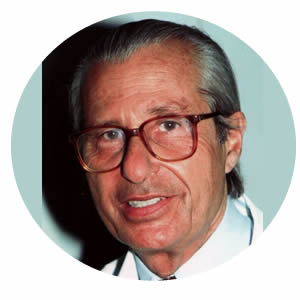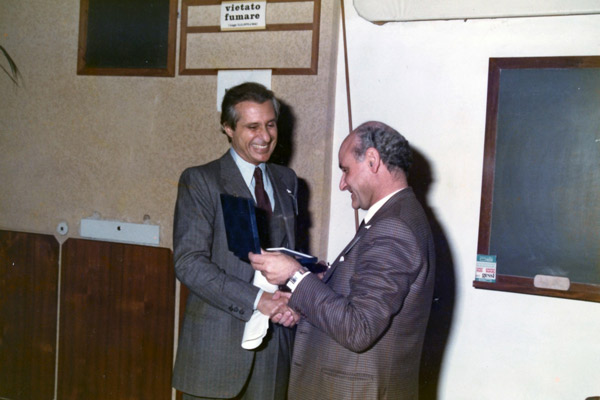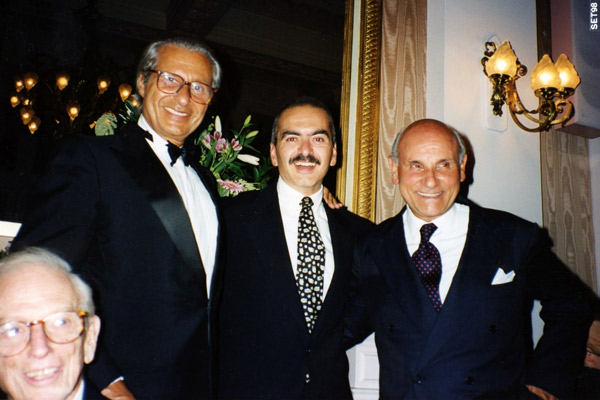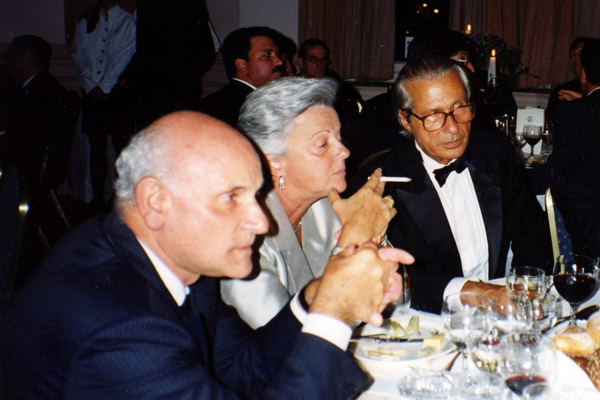

Prof. Mario Stirpe
1959 Laurea con lode in medicina e chirurgia.1960-1967 Assistant Professor Un. di Roma Dir. Prof G.B.Bietti.1970-1980 Dir. del Centro Diagnostico e Chirurgico per le Malattie della Retina.
1980- Crea la Fondazione G.B.Bietti patrocinata dal Presidente della Repubblica, nel 2005 eletta dal Ministero della Salute e dalla Conferenza Stato Regioni ad Istituto di Ricovero e Cura a Carattere Scientifico (IRCCS) del quale da allora è Presidente. 1992 Vara in Palamento la legge sul trapianto di cornea. Nel 1996 crea la Banca degli Occhi del Lazio. Autore di 234 pubblicazioni scientifiche, Organizzatore di 9 congressi internazionali.
Incarichi Istituzionali; Membro del Consiglio Superiore di Sanità, Membro Comitato Scientifico Istituto Superiore di Sanità, Presidente Comitato Tecnico Nazionale Prevenzione Cecita M. Salute.
Premi; Guest of Honor American Academy of Ophthalmology , Croce al Merito della Repubblica Italiana, Medaglia d’Oro al Merito della Sanità, Medaglia d’Oro Agenzia Internazionale Prevenzione Cecità.
Remembering Rosario
It is almost impossible to cite comprehensively the enormous scientific contribution of Rosario:
940 publications, 10 volumes and 11 monographs. There is virtually no ophthalmologist who did not recur to his studies across many subspecialties and more eminently the retina in all its nuances.
Early in his career, he proved to be ahead of times pursuing his medical intuition when in the 60’s,
he became among the very first in Europe to study and improve of fluoroangiography and laaser photocoagulation. It is precisely for this reason that I met Rosario in 1967 when I was young assistant at the University Institute directed by Prof. G.B. Bietti, and Rosario came to Rome to sit for his teaching exams.
The exam comprised a case study of random topic and the ability to diagnose a ‘difficult’ patient.
Professor Bietti asked me to select a patient for Rosario’s exam and after having written his diagnosis, Rosario turned to me, asking where the ‘trick’ was. I replied there really was no trick and we laughed possibly becoming friends in that empathic moment.
Sometime later, I asked Professor Bietti, and he responded enthusiastically, to send Doctors Ciucci
and Villani to Florence to improve the organization of our Medical Retina department.
Ever since then, thanks to our common interests Rosario and I connected on several occasions, to discuss
our experiences, doing so with the enthusiasm of two old friends.
This practice gave me an advantage over my Colleagues interested in ‘closed-eye’ vitrectomy since
at the beginning we thought that pursuing aggressively the removal of fibrovascular membranes and vitreous would halt the stimulation of neo-vascularization in diabetic retinopathy.
During one of our meetings, Rosario showed me the successes of photocoagulation, obtained with treatment
of ischemic areas, recommending the treatment even after the most complete vitrectomy. Not long after that, the necessity for the treatment associated with vitrectomy in diabetic retinopathy became universally accepted and gave rise to further studies to formally allow endo-laser treatment, during vitrectomy.
Rosario’s inventive and original thinking, combined with his tireless efforts and cordial manner, made him the ideal person to serve on numerous international Boards. Together in the late 90’s, we founded in the Italian Retina Society (SIR), which to this day, retains a strong and large membership.
I have very often thought about how much the Italian ophthalmological community would need today a “novel” Rosario Brancato. All scientific communities are occasionally blessed by the presence of an outstanding figures that stand above the others, characterize and define a particular research period: Rosario was one of those.



